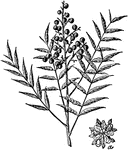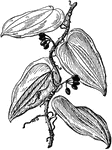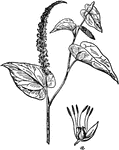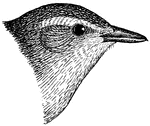
Warbling Vireo
The Warbling Vireo, Vireo gilvus, is a small songbird. Adults are 12 cm long and weigh 12 g. They are…
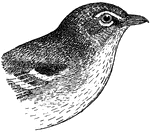
Yellow-throated Vireo
The Yellow-throated Vireo, Vireo flavifrons, is a small American songbird. Adults are mainly olive on…
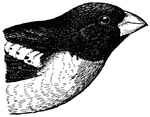
Rose-breasted Grosbeak (Male)
The Rose-breasted Grosbeak, Pheucticus ludovicianus, is a large seed-eating bird in the cardinal family.…
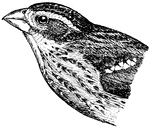
Rose-breasted Grosbeak (Female)
The Rose-breasted Grosbeak, Pheucticus ludovicianus, is a large seed-eating bird in the cardinal family.…

Brown-tail Moth
The Brown-tail (Euproctis chrysorrhoea) is a moth of the family Lymantriidae. It is distributed throughout…
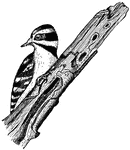
Downy Woodpecker
The Downy Woodpecker, Picoides pubescens, is the smallest woodpecker in North America. Adults are mainly…
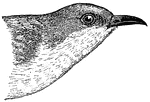
Black-billed Cuckoo
The Black-billed Cuckoo, Coccyzus erythropthalmus, is a cuckoo. Adults have a long brown tail and a…
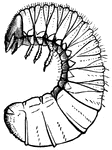
Grubworms
White grubs or Grubworms are the larvae of scarabs (beetles). Grubs commonly attack the roots of turfgrasses…
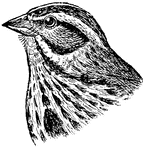
Song Sparrow
The Song Sparrow, Melospiza melodia, is a medium-sized American sparrow. Adults have brown upperparts…

Field Sparrow
The Field Sparrow, Spizella pusilla, is a small sparrow. Adults have brown upperparts, a light brown…

Lackey Moth
The Lackey moth, Malacosoma neustria, is a member of the genus Malacosoma, common across southern Britain…
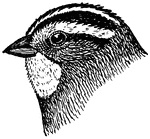
White-throated Sparrow
The White-throated Sparrow, Zonotrichia albicollis, is a passerine bird of the American sparrow family…

Vesper Sparrow
The Vesper Sparrow, Pooecetes gramineus, is a medium-sized sparrow. It is the only member of the genus…
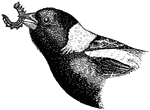
Bobolink (Male)
The Bobolink, Dolichonyx oryzivorus, is a small New World blackbird and the only member of genus Dolichonyx.…

Bobolink (Female)
The Bobolink, Dolichonyx oryzivorus, is a small New World blackbird and the only member of genus Dolichonyx.…
![The Whip-poor-will or whippoorwill, Caprimulgus vociferus, is a medium-sized (22-27 cm) nightjar from North and Central America. The Whip-poor-will is commonly heard within its range, but less often seen. It is named onomatopoeically after its call. This bird is sometimes confused[1] with the related Chuck-will's-widow (Caprimulgus carolinensis) which has a similar but lower-pitched and slower call. Adults have mottled plumage: the upperparts are grey, black and brown; the lower parts are grey and black. They have a very short bill and a black throat. Males have a white patch below the throat and white tips on the outer tail feathers; in the female, these parts are light brown.](https://etc.usf.edu/clipart/57000/57013/57013_whippoorwill_mth.gif)
Whip-poor-will
The Whip-poor-will or whippoorwill, Caprimulgus vociferus, is a medium-sized (22-27 cm) nightjar from…

Swamp Sparrow
The Swamp Sparrow, Melospiza georgiana, is a medium-sized sparrow. Adults have streaked rusty and black…
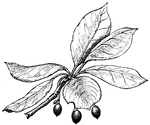
Tupelp
The tupelos, or pepperidge tree, genus Nyssa, are a small genus of about 9 to 11 species of trees with…
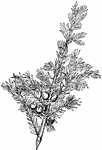
Juniper
Junipers are coniferous plants in the genus Juniperus of the cypress family Cupressaceae. Depending…
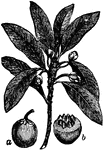
Sapodilla
"Sapodilla (Sapota zapotilla). (a), the fruit; (b), the same, transversely cut." -Whitney, 1911

Mock Strawberry
The stem of the mock strawberry (Duchesnea indica), a flowering plant that gets its name from its fruit's…

Sassafras
"Sassafras (Sassafras sassafras). 1. Branch with fruits. 2. Branch with sterile flowers. a, b, c, different…

Summer Savory
The Summer Savory (Satureja hortensis) is a flowering plant of the Lamiaceae family. The image shows…

Early Saxifrage
"Flowering plant of saxifrage (Saxifraga virginiensis). a, a flower; b, the fruit." -Whitney, 1911

Scaled Leaves
A variety of leaves with scales: "a, the scale-like leaves of the stem of Lathraea squamaria (toothwort);…
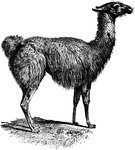
Guanaco
The guanaco (Lama guanicoe) is a camelid animal native to South America that stands between 107 and…
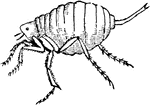
Chigoe Flea (Male)
The chigoe flea (Tunga penetrans) is a parasitic arthropod found in tropical climates, especially South…
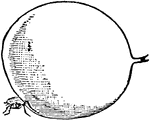
Chigoe Flea (Female)
The chigoe flea (Tunga penetrans) is a parasitic arthropod found in tropical climates, especially South…
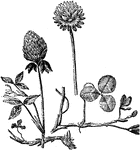
Clover
An illustration of white clover (left) and red clover (right). Clover (Trifolium), or trefoil, is a…
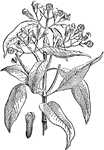
Clove Plant and Seed
Cloves (Syzygium aromaticum, syn. Eugenia aromaticum or Eugenia caryophyllata) are the aromatic dried…
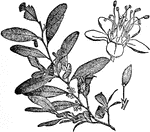
Coca Flower
Coca is a plant in the family Erythroxylaceae, native to north-western South America. The plant plays…
Coca Fruit
Coca is a plant in the family Erythroxylaceae, native to north-western South America. The plant plays…
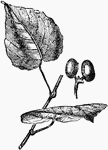
Anamirta cocculus
An illustration of an anamirta cocculus leaf. Anamirta cocculus is an Southeast Asian and Indian climbing…

Anamirta cocculus Flowers
An illustration of an anamirta cocculus branch with flowers. Anamirta cocculus is an Southeast Asian…
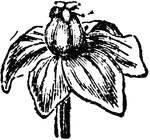
Anamirta cocculus Flower (Female)
An illustration of an anamirta cocculus female flower. Anamirta cocculus is an Southeast Asian and Indian…

Anamirta cocculus Flower (Female)
An illustration of an anamirta cocculus fruit. Anamirta cocculus is an Southeast Asian and Indian climbing…
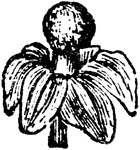
Anamirta cocculus Flower (Male)
An illustration of an anamirta cocculus male flower. Anamirta cocculus is an Southeast Asian and Indian…
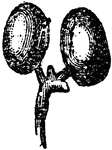
Anamirta cocculus Fruit
An illustration of an anamirta cocculus male flower with the sephals removed. Anamirta cocculus is an…
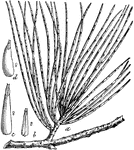
Pine Needle Scale
"a, Scales of Chionaspis pinifoliae upon pine-leaves, natural size; b, scale of male, enlarged; c, straight…
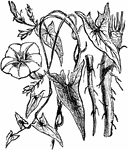
Scammony
The scammony (Convolvulus scammonia) is a flowering plant of the bindweed family. R, the root.
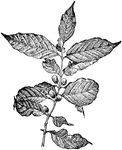
Coffea Arabica
Coffea arabica is a species of coffee indigenous to Ethiopia and Yemen. It is also known as the "coffee…
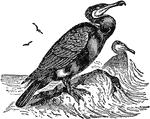
Double-crested Cormorant
The Double-crested Cormorant (Phalacrocorax auritus) is a member of the cormorant family of seabirds.…

Brown Creeper
The Brown Creeper (Mohoua novaeseelandiae), also known by its Māori name, Pipipi, is a small…

Crocket
A crocket is a hook-shaped decorative element common in Gothic architecture. It is in the form of a…
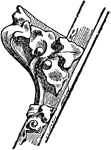
Crocket
A crocket is a hook-shaped decorative element common in Gothic architecture. It is in the form of a…
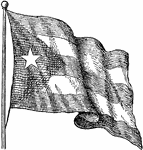
Cuban Flag
The flag of Cuba was adopted on May 20, 1902, containing a field with five blue and white stripes, and…

Remains of the Capitol After the Fire of 1814
The Burning of Washington took place in 1814, during the Anglo-American War of 1812. British forces…

Remains of the White House After the Fire of 1814
The Burning of Washington took place in 1814, during the Anglo-American War of 1812. British forces…

Red Currant
The Red currant (Ribes rubrum) is a member of the genus Ribes in the gooseberry family Grossulariaceae,…

Date Palm Leaf
An illustration of a portion of a date palm leaf. The Date Palm (Phoenix dactylifera) is a palm in the…
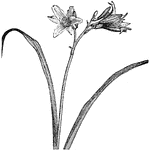
Yellow Day-lily
Hemerocallis lilioasphodelus, (syn. Hemerocallis flava, Lemon Day-lily Lemon Lily, Yellow Day-lily)…
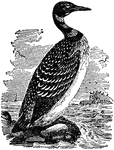
Great Northern Diver
The Great Northern Diver, known in North America as the Common Loon (Gavia immer), is a large member…
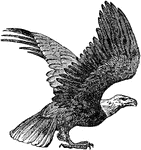
Bald Eagle
The Bald Eagle (Haliaeetus leucocephalus) is a bird of prey found in North America that is most recognizable…
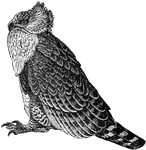
Martial Eagle
The Martial Eagle (Polemaetus bellicosus), is Africa's largest eagle and is the only member of the genus…
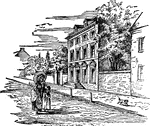
The President's House in Philadelphia (1794)
This house, located on the 500 block of Market Street, served as the executive mansion of the United…

Andrew Dickson White
Andrew Dickson White (November 7, 1832 – November 4, 1918) was a U.S. diplomat, author, and educator,…
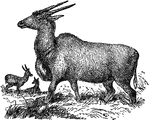
Eland
The common eland (Taurotragus oryx, also known as the southern eland) is a savannah and plains antelope…
